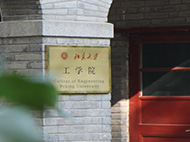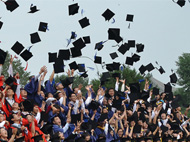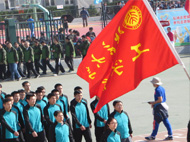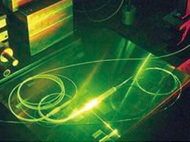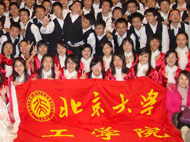主办:材料系与应用物理研究中心
报告人:Professor Puru Jena 等
时间:7月12日下午2:30~
地点:澳门太阳娱乐网站官网1号楼210报告厅
主持人:孙强 教授
报告一:From Clusters to Crystals: A Journey
Professor Puru Jena
Physics Department, Virginia Commonwealth University, Richmond, VA 23284, USA
pjena@vcu.edu
主持人:孙强 教授
时间:2019年7月12日下午2:30~4:00
地 点: 澳门太阳娱乐网站官网1号楼210报告厅
报告摘要:At the dawn of cluster science, the motivation for studying clusters was to understand how properties of bulk matter evolve – one atom at a time. Five decades and 200 000 papers later, this still remains a desired goal. However, these studies have revealed many unexpected and exciting properties that have given the field of clusters its own identity [1]. In this talk, I will highlight some of these achievements by focusing on: (1) the stability, the appearance of magic numbers, and fragmentation of clusters that linked cluster science to nuclear physics. (2) Unique magnetic properties where clusters of non-magnetic materials become magnetic, those of ferromagnetic materials become super-paramagnetic, and those of antiferromagnetic materials become ferro- or ferrimagnetic. (3) Clusters as superatoms that mimic the properties of atoms and can form the building blocks of a three-dimensional periodic table and a new class of cluster-assembled materials with tailored properties. (4) Examples of cluster-ions as building blocks of energy materials. I will provide experimental evidence wherever available.
[1] Jena, P. and Sun, Q.: “Super Atomic Clusters: Design Rules and Potential for Building Blocks of Materials”, Chem. Rev. 118, 5755-5870 (2018)
报告人简介:Prof. Puru Jena received his Ph. D. in Physics from the University of California at Riverside in 1970. After postdoctoral appointments, he joined Michigan Technological University as Associate Professor in 1978. Dr. Jena moved to Virginia Commonwealth University (VCU) in 1980 where he was promoted to full Professor of Physics in 1982, and named Distinguished Professor of Physics in 2005. In addition, he served as Program Director at the Materials Science Division of the National Science Foundation, and as Jefferson Science Fellow and Senior Science Advisor at the US Department of State. Prof. Jena’s research covers a wide range of topics in nano-structured materials, condensed matter Physics, and materials Science. He is the author of more than 600 papers and 13 edited books. He has given over 440 invited talks including over 200 talks at international conferences in 30 countries around the world, and organized over 50 international conferences. Prof. Jena’s honors include: Outstanding Scientist of Virginia, Outstanding Faculty Award from the State Council of Higher Education of Virginia, and Presidential Medallion from VCU, Fellow of the American Physical Society since 2000.
报告二:Optomechanically controlling material geometries
Professor Jian Zhou
Center for Advancing Materials Performance from the Nanoscale, Xi’an Jiaotong University, Xi’an, China
主持人:孙强 教授
时间:2019年7月12日 下午4:00 ~ 5:00
地 点: 澳门太阳娱乐网站官网1号楼210报告厅
报告摘要:Diffusional phase-change materials, such as Ge-Sb-Te alloys, are used in rewritable nonvolatile memory devices (PC-RAM). This order-disorder transition contains a large latent heat and requires breaking of chemical bonds. It is thus highly desired to develop new phase change materials with diffusionless and order-to-order transitions to accelerate the read/write kinetics, reduce energy dissipation, and eliminate fatigue. Two-dimensional materials are considered as potential phase change materials. For example, one famous 2D material example is transition metal dichalcogenide monolayer which exists in 2H and 1T′ structures. However, it always requires mechanical, electrical, or electrochemical contacts and patterning to trigger phase transition. Non-contacting optical readout/write with focused laser would be preferable in many circumstances, especially for low-dimensional materials which are easily optically accessible. Here, we computationally illustrate an optomechanical strategy, which uses a linearly polarized laser pulse with selected frequency. We will give a few examples of such ultrafast diffusionless martensitic phase transition in various materials. With no or only a few chemical bonds breaking, the phase transition would occur very fast and requires low energy input.
报告人简介:Jian Zhou, Professor, Xi’an Jiaotong University, China. He received his BSc (2008) and PhD (2013) from Peking University. After appointments as postdoc associate at Virginia Commonwealth University and Massachusetts Institute of Technology, he joined Xi’an Jiaotong University in 2018, supported by 1,000 Young Program. Prof. Zhou has over 60 peer reviewed publications, including PNAS, PRL, JACS, Nano Lett., Nat. Communi., Angew. Chem., and etc. He has over 3,000 total citations and an h-index of 23. His research interest lies in theoretical and computational studies of low-dimensional quantum materials, with a most recent focus on optomechanics and topological materials.


